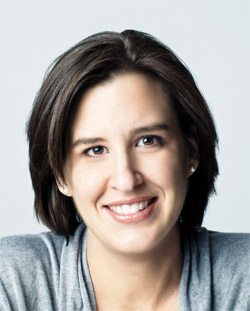Editor’s Letter (March 2013): interracial marriages, multiculturalism and the mixed-race generation

In grade school, I was taught that Canada embraces multiculturalism, whereas the United States is a melting pot. The notion was drilled into me year after year: we celebrate our diversity and encourage the preservation of our ethnic heritage, whereas Americans assimilate. Boy, were my teachers wrong. Toronto is a melting pot if ever there was one. It’s true that this city hosts dozens of ethnic festivals every year, and that we like to trumpet our cultural differences, but we also assimilate within a couple of generations.
According to the 2006 census, interracial pairings are growing at a much faster rate than same-race marriages, leading to a new cohort of hyphenated Canadians. It’s a phenomenon I witness all around me. Friends of mine in their childbearing years struggle to come up with names for their babies that work in both the mother’s and the father’s cultures—because so often those cultures originate at opposite ends of the globe. They want to give their kids names that fit into the little segment that overlaps on the Venn diagram of their respective backgrounds: Japanese-Jewish. Dutch-Jamaican. Chinese-Norwegian. Iranian-German. Hence some unusual Facebook birth announcements: Boaz, Asher, Raya, Lev, Emine.
My seven-year-old son, who is growing up among kids from all over the world, assumes everyone is half something or a quarter something and largely doesn’t care—unless it’s holiday time, when he reports, enviously, which kids celebrate the greatest number of religious holidays (and therefore score the most Lego sets).
Our cover story, about mixed-race Toronto (“Mixie Me,” page 34), is written by Nicholas Hune-Brown, one of Toronto Life’s award-winning writers. Regular readers might remember, among other stories, his portrait of Toronto’s pot café culture back in 2009, or his artful 2010 examination of the shortened lives of the Toronto Zoo’s elephants, or, most recently, his poignant feature on a family’s fight to keep their father on life support at Sunnybrook hospital. Hune-Brown, who is 30 years old and was born in Toronto to a Chinese mother and a British father, says he has witnessed a seismic change in the city where race is concerned. When he was attending elementary school in downtown Toronto, he was the only mixed-race kid in his grade. What a difference 20 years makes.
Now, in the wake of several new studies about the proliferation of mixed-race kids in North America, Hune-Brown tries to figure out what it means to be biracial, or for that matter multiracial, in Toronto in 2013. His conclusion is fascinating. Turns out we aren’t colour-blind, contrary to the fantasy of romantic liberal-minded people everywhere, and we may never be. Instead, when Toronto is at its best, we are aware of each other’s global mélanges and attuned to ethnic variety, in an accepting, cosmopolitan way.
Perhaps my social studies teachers weren’t so off-base. Children who grew up under the banner of the country’s multicultural policies, with languages and ethnicity enthusiastically protected, have fallen in love and procreated. The result? A new generation of kids with strong cultural ties—to more than one culture. It’s a multicultural melting pot. In other words, Toronto.
(Image: Christopher Wahl)





